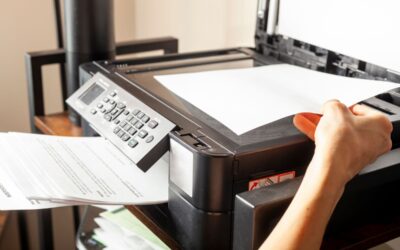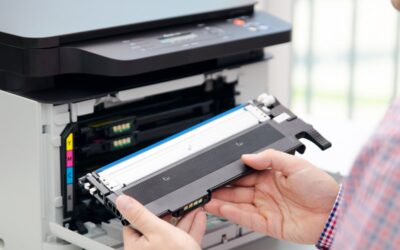Your office photocopy machine is a critical tool for streamlining your print operations and boosting office productivity. So, it is essential to ensure your office copiers are always working optimally with the best practices available. There is nothing more frustrating than when you go to make a copy, only to find an issue with your copier. From paper jams to image quality issues, these problems can significantly slow down your daily print operations and escalate to bigger issues.
Today, we will explore the top 3 most common office photocopy problems and how to solve these issues. With these tips and tricks, you can confidently address your office photocopy machine issues with ease, quickly getting back to your mission critical print jobs.
1. Paper Jams

Paper jams are by far one of the most common printer and copier issues that businesses find themselves running into. A paper jam typically occurs because the printer paper you are using is stuck inside of your device. This can happen for a variety of reasons, including using incompatible printer paper for your specific model and misalignment of your paper in the tray.
Regardless of the cause, these jams can cause devastating damage to your copier. If left untreated, these paper jams will escalate into larger issues that can affect the internal mechanisms of your copier. So, fixing these issues swiftly is critical for the overall health of your copier.
The first and most important step is to not forcefully yank the paper out. Doing so can ruin the inside of your copier. Instead, once you identify the jam, check the rollers and paper tray to see if there is any misalignment or paper pieces stuck near the rollers. To remove the paper, gently pull the paper in the direction of the paper path being careful not to rip the paper.
If the paper is stuck further inside, you will want to navigate to a different access point, such as the back of the panel. If, after trying these tips, you are still having issues removing the jam, it is best to escalate the problem with a BDS print expert. Our team will be onsite in record time to remedy the issue and get your team back printing in no time.
2. Low-Quality Copies
Your copier should be producing vibrant, sharp, and crisp text. Low quality prints typically appear as blurry, faded, streaked, or uneven prints that read poorly in comparison to your typical quality. This issue can be caused by a variety of factors, ranging from hardware issues with your current copier to incorrect dpi settings for your copier.
Generally, the first area to check is your toner or ink levels, considering these components are critical to vibrant prints. A toner or ink cartridge that is running low can significantly affect your print quality, creating faded or blotchy prints. Additionally, A dirty or worn-out drum can lead to poor print quality, as these parts are responsible for transferring the toner to paper.
If you have checked both options and are still experiencing poor prints, your copier may be relying on incorrect copy settings. Using the wrong copy setting, such as low resolution or an inappropriate paper type is a common cause of poor print quality. To remedy this issue, check your user-manual to ensure you are using brand-compatible supplies and copying in the best resolution for your specific model.
3. Slow Copying Speeds
Equally as important as the quality of your copies is the speed of your copier. Modern advanced copiers can handle large volumes of copies at high speeds while still maintaining excellent print quality. However, there are times when your copier may be operating slower than usual, which can cause significant delays in the copying process.
When this happens, it is often due to an excess amount of print jobs queued up in the system, low memory, or the copier struggling with a complex document (like a high-resolution image). Because copier speed is a bit more complex, the best advice is to ensure regular maintenance of your device so our expert team can catch issues early on.
Early intervention significantly reduces the risk of slow copy speeds and other issues. Furthermore, clearing your queue can often help resolve this issue and get your copying speed back to normal. Another solution may be unplugging and plugging your copier back in. However, if neither of these options work, it is best to escalate the issue over to your #1 trusted local copier dealer, BDS!
Stay updated on the latest industry news and trends at BDS by following us on LinkedIn, Facebook, YouTube, TikTok, and Instagram today!






